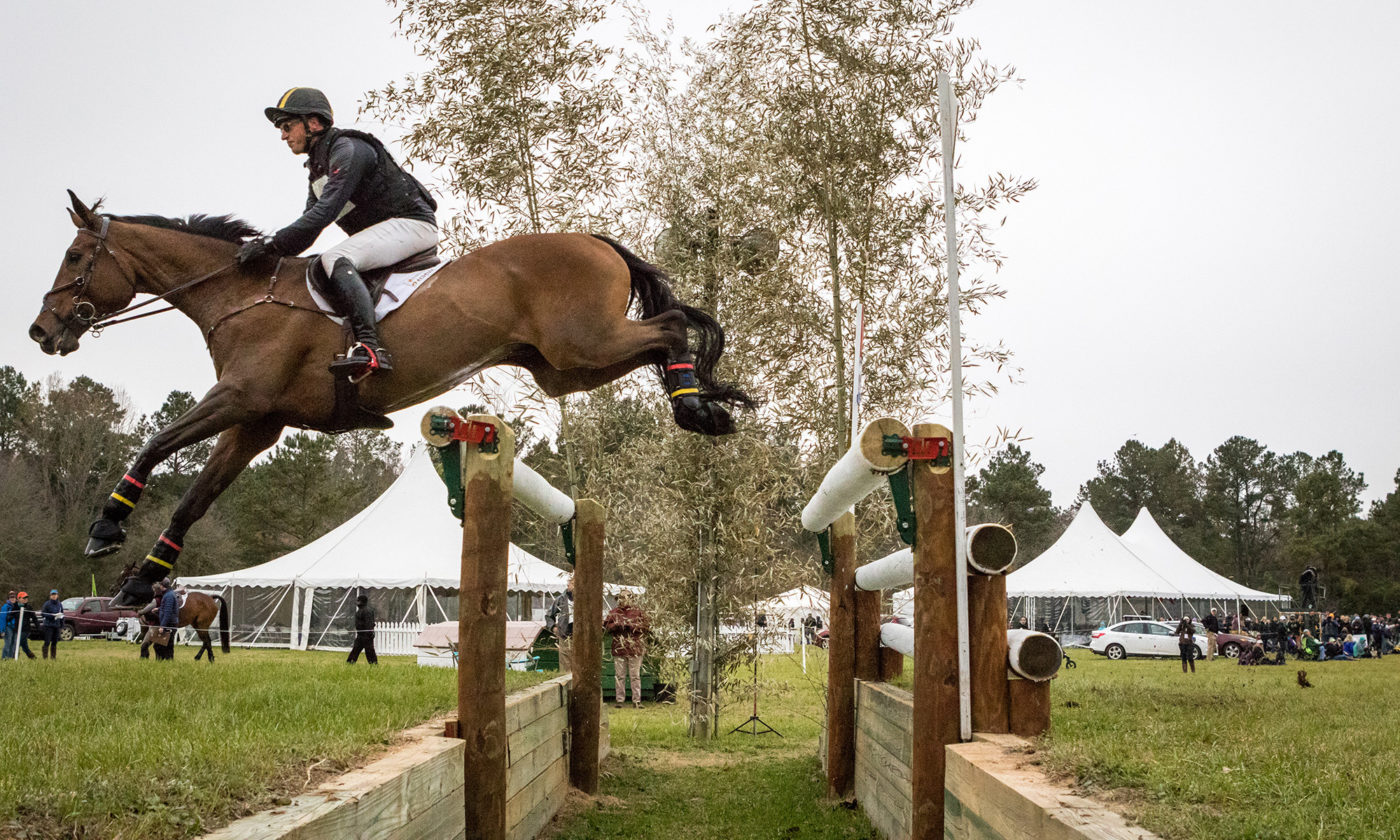

Shannon Wood, a graduate student in the mechanical engineering program at the University of Kentucky, has published a thesis entitled “Safety Concepts for Every Ride: A Statistical Ensemble Simulation to Mitigate Rotational Falls in Eventing Cross-Country.”
Wood was part of the team that worked with Dr. Suzanne Weaver Smith, University of Kentucky Professor of Mechanical Engineering, on the USEA Frangible Fence Study from 2016-2018. The study was funded by donations raised by the USEA Foundation and the initial findings were released in 2019. Information from this study is also included in Wood’s thesis.
Wood’s thesis abstract states, “Rotational falls are the leading cause of death and serious injury in the equestrian sport of eventing. Previous studies to develop safety devices used physical models representing one or at most several physical situations leading to different designs and no common understanding. In this thesis, a statistical ensemble model is developed and applied to generate and evaluate 10,000 different situations that might potentially lead to rotational falls. For accurate statistical representation of the horse and rider inertia distributions, measurements of over 400 training or competing horses and riders were recorded and incorporated. Video was recorded of 218 total competitors approaching 10 different jumps on cross-country courses in competitions ranging from Preliminary to CCI5*, yielding jump configuration angles for different fence types. Combining information for these, among 26 total variables, a statistical ensemble simulation using impulse momentum physics identifies conditions for rotation and defines design criteria for future general and situation-specific jumps and safety devices. A Jump Safety Quality Index is also devised to represent the benefit of an activating fence design for mitigating rotational falls versus the detriment and competition penalties of false activation.”
Wood also shared the following highlights:
“Results of this study include probability of rotation for a fixed fence scenario, the mitigative potential for preventing rotational falls, and contacts that cause a fence to activate but would not result in a rotational fall,” Wood said. “This information is incorporated into a Jump Safety Quality Index. It also includes force-time contact information for rotational and no-rotational fall contacts on the critical foreleg region. Illustrations of varieties of rotational falls are included—one-contact, two-contact (rotation on landing), and torsional falls and an additional contributor to rotation: hind feet pushing while in contact with the fence. Recommendations for impulse limit and contact angle are included to minimize unnecessary (false) activations.”
Wood’s thesis can be viewed in full here.
Read past updates on the USEA Frangible Fence Study:
Are you following along with the action from home this weekend? Or maybe you're competing at an event and need information fast. Either way, we’ve got you covered! Check out the USEA’s Weekend Quick Links for links to information including the prize list, ride times, live scores, and more for all the events running this weekend.
Since the mid-’80s, lifelong horsewoman and professional artist Debra Sue Waters has devoted countless hours to the sport of eventing, and last year topped the rankings of the USEA Volunteer Incentive Program in Area V. Assisting behind the scenes at an event just comes naturally to the Millsap, Texas, resident.
Have you thanked your competition management team lately? Here’s your spring season reminder to do just that! Whether you’ll be debuting in the Starter division or cruising around at Advanced, competition management has a lot of moving parts to manage that will ensure a great experience for you and your horse. Keep your competition management team happy and help support the future of eventing with these quick tips from STRIDER.
The MARS Bromont Rising U25 scholarship program, administered by the USEA Foundation, is pleased to announce that up to 10 grants of up to $2,500 each will once again be available for talented young riders aged 25 and under, who are aiming to compete in the MARS Bromont (Quebec, Canada) U25CCI divisions in June, 2024. Highlighting this year’s program is the return of three-time German Olympic team member Bettina Hoy, as a guest coach for 2024.